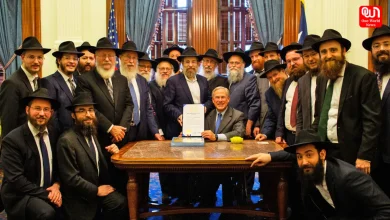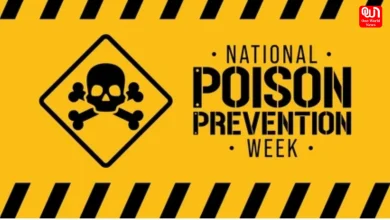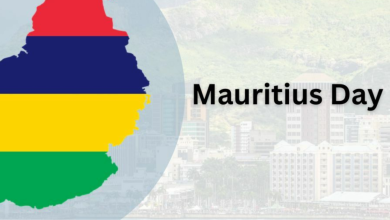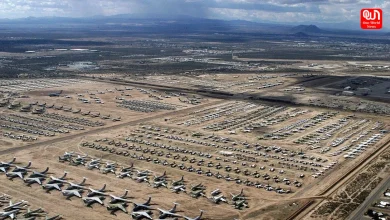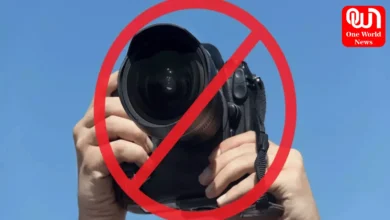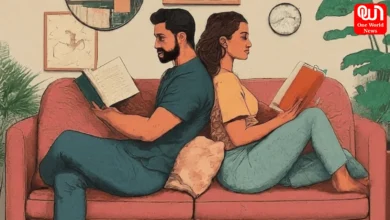Ram Janambhoomi: Kaam Ki Baat you need to know about this ‘Historic Decision’

Happiness in the entire nation, PM laid the foundation of Ram Janambhoomi
The battle of a struggle for hundreds of years, the valour of the movements and the restraint of the people is the result that the dream of building a Ram temple is finally fulfilled. Ram temple is the centre of faith of crores of Hindus, the result of those who sacrificed their lives.
The battle of Ram temple has been going on since the 15th century. As claimed, in 1528, the Mughal invader Babur’s commander Mir Baki broke the structure of the Ram temple and built the Babri Masjid here. After this, in 1885, this case first reached the court during the British rule.

Here is the story of the struggle of the Ram temple from the 15th century till now:
1528: Babur built a mosque here called Babri Masjid. According to Hindu belief, Lord Rama was born at this place.
1853: The Hindus believe that the mosque was built by demolishing the temple of Lord Rama. The first violence took place between Hindus and Muslims over the issue.
1859: The British government erects a barbed wire and allows separate prayers to Muslims and Hindus in the inner and outer premises of the disputed land.
1885: The case reached the court for the first time. Mahant Raghubar Das filed an appeal in the Faizabad court for permission to build a Ram temple adjoining the Babri Masjid.
Read more: Fact Check: Was there no Shubh Muhurat for Bhoomi Pujan, we decided to verify the claim?
23 December 1949: Around 50 Hindus reportedly placed a statue of Lord Rama at the central site of the mosque. After this, Hindus started worshipping regularly at that place. Muslims stopped offering Namaz.
16 January 1950: Gopal Singh Visharad filed an appeal in the Faizabad court seeking special permission to worship Ramlala.
December 5, 1950: Mahant Paramahamsa Ramchandra Das filed suit to continue Hindu prayers and keep Ramamurthy in Babri Masjid. The mosque was named ‘Dharka’
17 December 1959: Nirmohi Akhara files suit for transfer of disputed site.
18 December 1961: Uttar Pradesh Sunni Waqf Board sues Babri Masjid for ownership.
1984: Vishwa Hindu Parishad (VHP) started a campaign to open the locks of Babri Masjid and make Ram Janmasthan independent and build a huge temple. A committee was formed.
February 1, 1986: Faizabad District Judge allows Hindus to worship at the disputed site. The locks were reopened. Angry Muslims formed the Babri Masjid Action Committee in protest.
June 1989: The Bharatiya Janata Party (BJP) started giving formal support to the VHP, giving new life to the temple movement.
July 1, 1989: A fifth lawsuit was filed in the name of Lord Ramlala Virajaman.
9 November 1989: The government of the then Prime Minister Rajiv Gandhi allowed the foundation stone near Babri Masjid.
25 September 1990: BJP President LK Advani took out a rath yatra from Somnath in Gujarat to Ayodhya in Uttar Pradesh, which was followed by communal riots.
November 1990: Advani was arrested in Samastipur, Bihar. The BJP then appointed Prime Minister V.P. Withdrew support from Singh’s government.
October 1991: Kalyan Singh government in Uttar Pradesh took over 2.77 acres of land around Babri Masjid.
6 December 1992: Thousands of Kar Sevaks demolish Babri Masjid after reaching Ayodhya. This was followed by communal riots. A temporary Ram temple was built in a hurry.
16 December 1992: The Liberhan Commission is formed to investigate the responsible conditions for the demolition of the mosque.
January 2002: Prime Minister Atal Bihari Vajpayee started an Ayodhya department in his office, whose job was to negotiate with Hindus and Muslims to resolve the dispute.
April 2002: A three-judge bench begins hearing on the ownership of the disputed site in Ayodhya.
March-August 2003: Archaeological Survey of India excavated in Ayodhya on the instructions of Allahabad High Court. The Archaeological Survey of India claimed that there was evidence of the remains of the temple under the mosque. There were different opinions among Muslims about this.
September 2003: A court ruled that seven Hindu leaders instigating the demolition of the mosque to be called for trial.
July 2009: The Liberhan Commission submitted its report to Prime Minister Manmohan Singh 17 years after its formation.
28 September 2010: The Supreme Court paves the way for the judgment, dismissing the petition preventing the Allahabad High Court from awarding the case in the disputed case.
September 30, 2010: Lucknow bench of Allahabad High Court gives a historic verdict. The Allahabad High Court divided the disputed land into three parts, one part in the Ram temple, the other in the Sunni Waqf Board and the Nirmohi Akhara.
May 9, 2011: Supreme Court stays the Allahabad High Court verdict.
July 2016: Death of Hashim Ansari, the oldest litigant in the Babri case.
March 21, 2017: Supreme Court speaks of resolving the dispute by mutual consent.
19 April 2017: Supreme Court orders criminal cases against several leaders of BJP and RSS including LK Advani, Murali Manohar Joshi, Uma Bharti in the Babri Masjid demolition case.
8 February 2018: Supreme Court on civil appeals Started hearing.
2019: The Supreme Court constituted a five-member constitution bench headed by Chief Justice Ranjan Gogoi.
August 6, 2019: Supreme Court begins hearing the case daily.
October 16, 2019: The Supreme Court completes the hearing and reserves the verdict.
November 9, 2019: Supreme Court in its judgment said: Temple to be built on disputed land, Muslim side will get land elsewhere.
August 5, 2020: Prime Minister Narendra Modi laid the foundation stone of the Ram Mandir. Construction starts at the site.
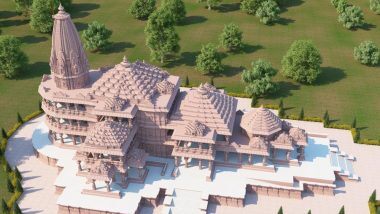
A number of debates took place before the foundation laying ceremony at the Ram Janmbhoomi site. Was it valid for the Prime Minister to go to a religious place and lay the foundation stone? Is it about communalism? Well, PM Modi has previously visited many other religious places as a Prime Minister so, there should be no debate on his going to Ayodhya. But yes, there can be questions that if he went for the Ram Mandir, will he also visit the proposed Mosque? As a Prime Minister, when he is visiting one of the sites of the centuries-long struggle, he should also visit the second one.
Another question arises on the time of the Foundation Laying Ceremony. The ceremony would have been postponed until the end of the pandemic. The main leaders who struggled for Ram Janmbhoomi, L.K. Advani, Murli Manohar Joshi, etc., were also not invited to the event which explains their present role and status in the party.
Have a news story, an interesting write-up or simply a suggestion? Write to us at info@oneworldnews.com

